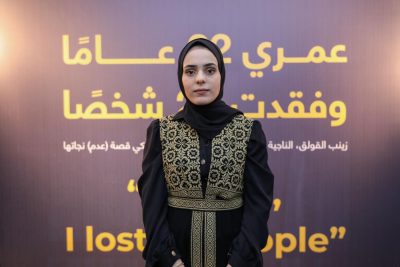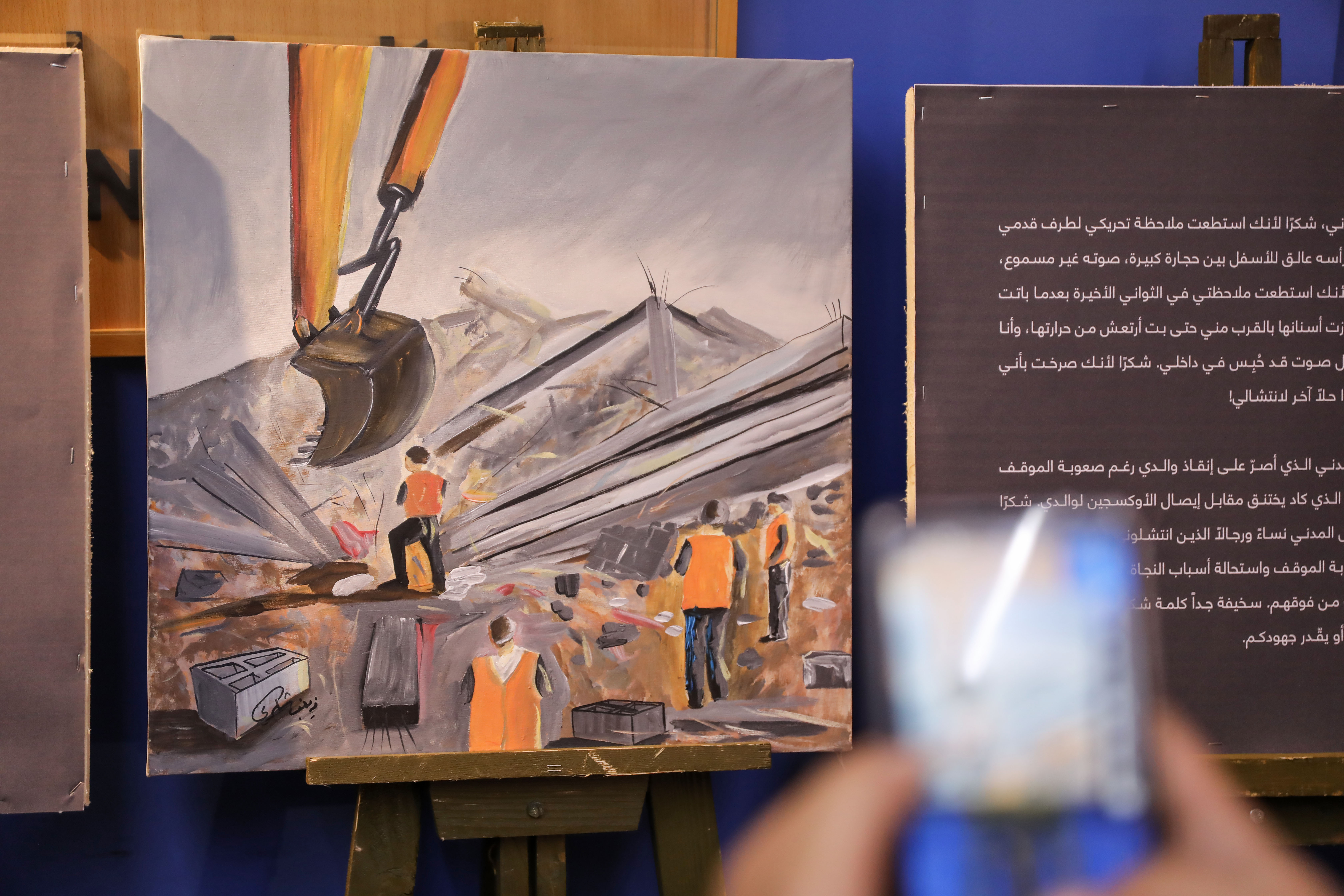‘A corpse in a gown’: Palestinian Artist Zainab al-Qolaq on Losing 22 Family Members
Ahead of a new exhibition, the Gaza-based artist talks about losing family members during an Israeli bombing in Gaza in May 2021

All Global Research articles can be read in 51 languages by activating the “Translate Website” drop down menu on the top banner of our home page (Desktop version).
To receive Global Research’s Daily Newsletter (selected articles), click here.
Visit and follow us on Instagram, Twitter and Facebook. Feel free to repost and share widely Global Research articles.
***
By the time Zainab al-Qolaq had reached the age of 22, she had already lost 22 people in her life. The Palestinian artist, now 23 years old, displayed her art, which speaks of her devastation and loss, this month in an exhibition in Gaza.
The exhibition was held in the Gaza office of the Euro-Med Human Rights Monitor, which put the exhibition together. (All photos by Mohammed Hajjar)


The two-day exhibition featured nine pieces of art that al-Qolaq painted after Israel’s offensive on Gaza in May 2021.
During the war on Gaza, al-Qolaq lost her mother and three of her siblings when an Israeli air strike hit her home. The family’s home is located in the residential block on al-Wehda Street, which was bombed on 16 May. Forty-two Palestinians died in a single night, among them 11 children.
Anas Jerjawi, the chief operating officer at Euro-Med, told Middle East Eye that it was important for them to provide a platform for al-Qolaq to share her experience. “Today we have decided to give the victim the floor to speak to the world by herself. Her paintings do not need to be accompanied by any language, or need to be translated to be felt and understood,” he said.
In this photo, al-Qolaq stands with her father and brother who survived the Israeli offensive.

The art reflects the suffering al-Qolaq felt in the aftermath of the attacks, which left many buildings, including residential blocks and media offices, flattened. Al-Qolaq also lost cousins, uncles and grandparents in the offensive.
“I can never describe the feelings and the thoughts I had throughout the 12 hours I spent under the rubble. I’ve never talked to anyone about it, no one knows what was going through my mind at that moment,” she told Middle East Eye.
After her home collapsed, Zainab got stuck under a heavy wall but managed to call an ambulance and talk to a paramedic. Al-Qolaq’s father was also pulled out from under the rubble by paramedics.
In this painting, al-Qolaq illustrates the 22 members of her family in shrouds following the attacks. “I imagined my relatives inside these shrouds, one by one, as I painted each of them and said goodbye to them. Twenty-two shrouds, for twenty-two lives that were lost overnight. These shrouds are not the same, though they may seem like they are – each wrapping represents a loved relative of mine,” she told Middle East Eye.

Her art not only depicts the hurt she felt from the offensive and the destruction of her neighbourhood, but also some of the mental struggles she endured as a result, and how she is coping since the events.
At the time of the Israeli offensive, al-Qolaq, an English student at university, was preparing for her final exams, hoping to graduate in the near future.
Al-Qolaq described how she is struggling to deal with the events and passing of time one year on. “The sun rising every morning troubles me. I am still hoping to open my eyes, as I used to, to my mother’s smile and affection. I am still longing for one hug from Hana.
“I used to stay up late with Ahmed, who would ease away the worries and pain of life by his infectious laughs. His laughter still echoes in my ears, so much so that I sometimes turn around to see if he is really there,” she said.

Much of her work centres around the psychological impact she has faced but struggled to put into words. For al-Qolaq, the exhibition and working on her art allowed her to express the trauma she went through, and allow people to get an insight into how the Israeli offensive impacted people like herself.
One of the biggest struggles al-Qolaq has faced is dealing with the absence of having so many loving family members around, spending quality time with them, and having them present in every aspect of her life.

Many have praised al-Qolaq’s strength and artwork. Maha Hussaini, a Middle East Eye contributor and strategy director at Euro-Med, said that al-Qolaq is strong for being able to talk about her experience.
“Despite our deep sorrow for what happened with Zainab and her family, we are proud of her and her courage and determination to overcome the trauma and speak firmly of what happened to her. She is truly an inspiring model for a strong survivor,” she said in a statement.

Although al-Qolaq was able to graduate, she described herself as a “corpse in a gown”, since she was not able to celebrate the milestone achievement with her entire family, and was still processing the events.

At the exhibition, the artist described how she was forced to relive the trauma as she was painting, and could hear the voices of her family and the paramedics.
She also described the fear she felt when her phone battery died while she was under the rubble and slowly losing her voice.

A large number of people turned out to the exhibition, where al-Qolaq thanked civil defence workers and paramedics for their service and saving her life.
“Thank you to the civil defence worker who insisted on saving my father despite the difficult situation and the lack of proper equipment – the person who almost suffocated while trying to deliver oxygen to my father,” she said.
“I know how trivial [my] thank you is compared to what you have done. Nothing is enough to reward you for your efforts.”
*
Note to readers: Please click the share buttons above or below. Follow us on Instagram, Twitter and Facebook. Feel free to repost and share widely Global Research articles.

